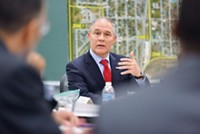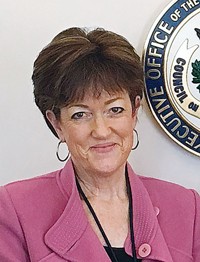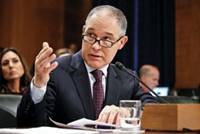Advertisement
Grab your lab coat. Let's get started
Welcome!
Welcome!
Create an account below to get 6 C&EN articles per month, receive newsletters and more - all free.
It seems this is your first time logging in online. Please enter the following information to continue.
As an ACS member you automatically get access to this site. All we need is few more details to create your reading experience.
Not you? Sign in with a different account.
Not you? Sign in with a different account.
ERROR 1
ERROR 1
ERROR 2
ERROR 2
ERROR 2
ERROR 2
ERROR 2
Password and Confirm password must match.
If you have an ACS member number, please enter it here so we can link this account to your membership. (optional)
ERROR 2
ACS values your privacy. By submitting your information, you are gaining access to C&EN and subscribing to our weekly newsletter. We use the information you provide to make your reading experience better, and we will never sell your data to third party members.
Environment
Those Were The Days
Gerald Ford presided over energy, environmental milestones
by David J. Hanson
January 15, 2007
| A version of this story appeared in
Volume 85, Issue 3
The many articles and newscasts reflecting on the presidency of Gerald Ford after his death last month did not spend much time on his energy, science, or environmental policies. Most of the attention, and rightly so, was focused on Ford's efforts to get the nation and government back to normal in the wake of the scandalous Watergate break-in conspiracy and resignation of former president Richard Nixon.
When Ford became President in August 1974, the U.S. was at the beginning of a revolution in energy and environmental policy, the effects of which are still being felt today. The Environmental Protection Agency had just been created in 1970, and new laws and regulations on the environment were coming thick and fast. The Occupational Safety & Health Administration was also new, and it was pressing hard for more worker safety measures, including reduced exposures to industrial chemicals.
On top of this, the nation was recovering from the destructive 1973 oil embargo by the Organization of Petroleum Exporting Countries, which had tripled the price of crude oil and made Americans realize how dependent their country had become on foreign oil.
Ford did not walk into this flurry of activity unprepared. He had been a congressman for 25 years, was leader of the minority Republicans in the House, and had been vice president for nine months. Still, he faced some big issues.
In his first State of the Union address to Congress in January 1975, Ford laid out a new, comprehensive energy policy for the U.S. The broad program included a lot of the same solutions to energy problems we are hearing today. He advocated a $100 billion program to increase oil and natural gas production on the outer continental shelf and in Alaska, to convert oil-fired power plants to burn coal, and to speed up development of coal gasification technology and nonfossil fuels. He also wanted to build 200 nuclear power plants and 150 coal-fired power plants and to have millions of energy-conserving cars on the road by 1985. He even proposed a $3.00-per-barrel excise tax on imported petroleum. The result, Ford said, would be a reduction in U.S. imports of oil of 2 million bbl per day in three years.
None of this happened. The 1974 election, after the Watergate mess, brought a flock of new, liberal Democrats into Congress determined to do nothing the Republicans wanted, and Ford was left with only his veto power with which to fight. Americans quickly adjusted to higher energy prices, and things went on as they had before.
In the environmental arena, Ford faced calls for tougher government controls on pesticide exposures, on hazardous waste disposal, and on toxic air emissions. But his biggest regulatory challenge was passage of the Toxic Substances Control Act. This messy measure had been debated in Congress since 1971.
One thing to keep in mind is how nascent the national grassroots environmental movements were in 1975. These organizations had little sway at EPA and virtually no presence at all in Congress. The TSCA debate was between the chemical industry, which absolutely hated the bill because it was seen as costing companies billions of dollars annually to comply, and the Democratic Congress, which was hearing how chemicals such as vinyl chloride, asbestos, kepone, and polychlorinated biphenyls were causing epidemics of disease around the country.
Ford weighed in on the debate as it neared completion in the summer of 1976, saying the bill being considered was flawed because it gave the EPA administrator too much power to ban chemical production and it put too great a financial burden on chemical companies to get premarket approval of new compounds. He also advocated that cost-and-benefit analysis be used to determine how a substance might be regulated.
Ford eventually signed a compromise TSCA measure in October 1976, and the law remains one of the most controversial regulatory bills ever passed (C&EN, Jan. 8, page 34).
Ford also did much to improve the quality of science advice at the White House. Nixon had abolished the Office of Science & Technology and fired his science adviser early in his tenure, but Ford moved to reestablish the post immediately. He also sought legislation creating a new White House Office of Science & Technology Policy (OSTP) because he believed that having the office established by law would make it almost impossible for subsequent administrations to eliminate the position.
Again, the fight with the Democratic Congress went on for over a year. Finally, legislation was passed in May 1976 creating OSTP, and Ford nominated H. Guyford Stever to be his science adviser, a post that Stever, who was also director of the National Science Foundation, had informally held since Ford took office. Ford also set up high-level science advisory committees to guide him on technical issues.
Ford's effort to formalize a science office at the White House was indicative of his belief in the importance of research and technology. And there is still a Ford connection to science policy in Congress today. Ford's first science adviser, while Ford was a congressman, was none other than Vernon J. Ehlers, at the time a professor of physics at Calvin College in Grand Rapids, Mich. Ehlers went on to be elected to the House in Ford's Michigan district and continues to be an important voice for science in Congress.
Views expressed on this page are those of the author and not necessarily those of ACS.





Join the conversation
Contact the reporter
Submit a Letter to the Editor for publication
Engage with us on Twitter